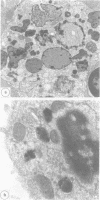Abstract
Two siblings, from consanguineous parents, developed in their twenties a Parkinsonian syndrome. In the elder, the disease evolved for 13 years and the necropsic study was diagnostic of Hallervorden-Spatz disease. The younger sibling is severely affected after 12 years of the disorder. Several CT and one MR studies done in this patient during the last 4 years have been normal. Ultrastructural studies of the bone marrow histiocytes and blood lymphocytes disclosed peculiar inclusions. Bromocriptine in low doses proved to be a beneficial therapy for this patient.
Full text
PDF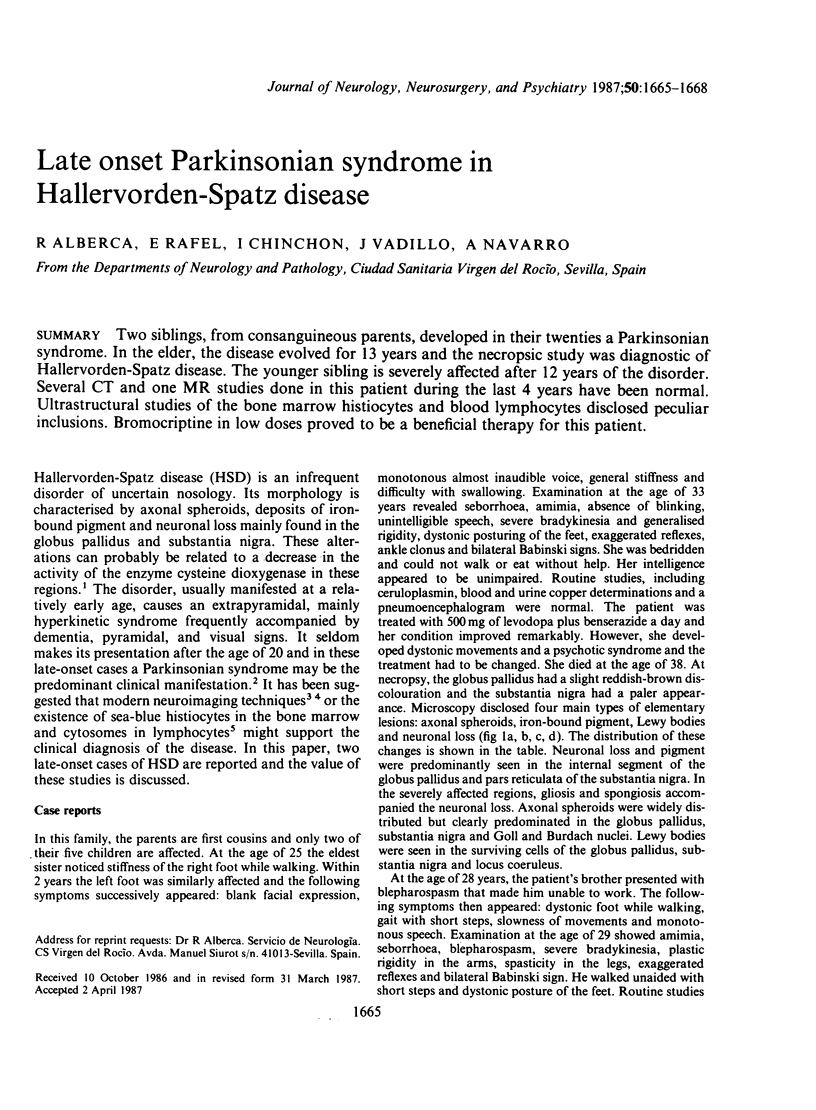
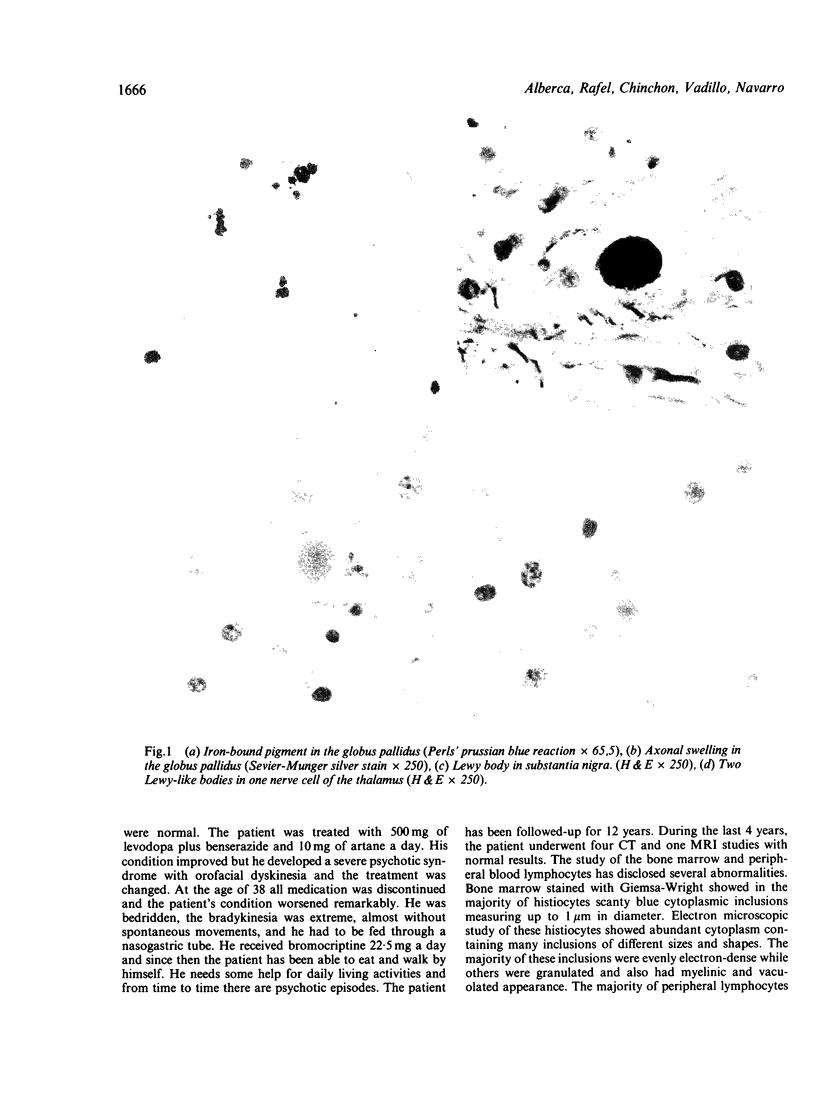
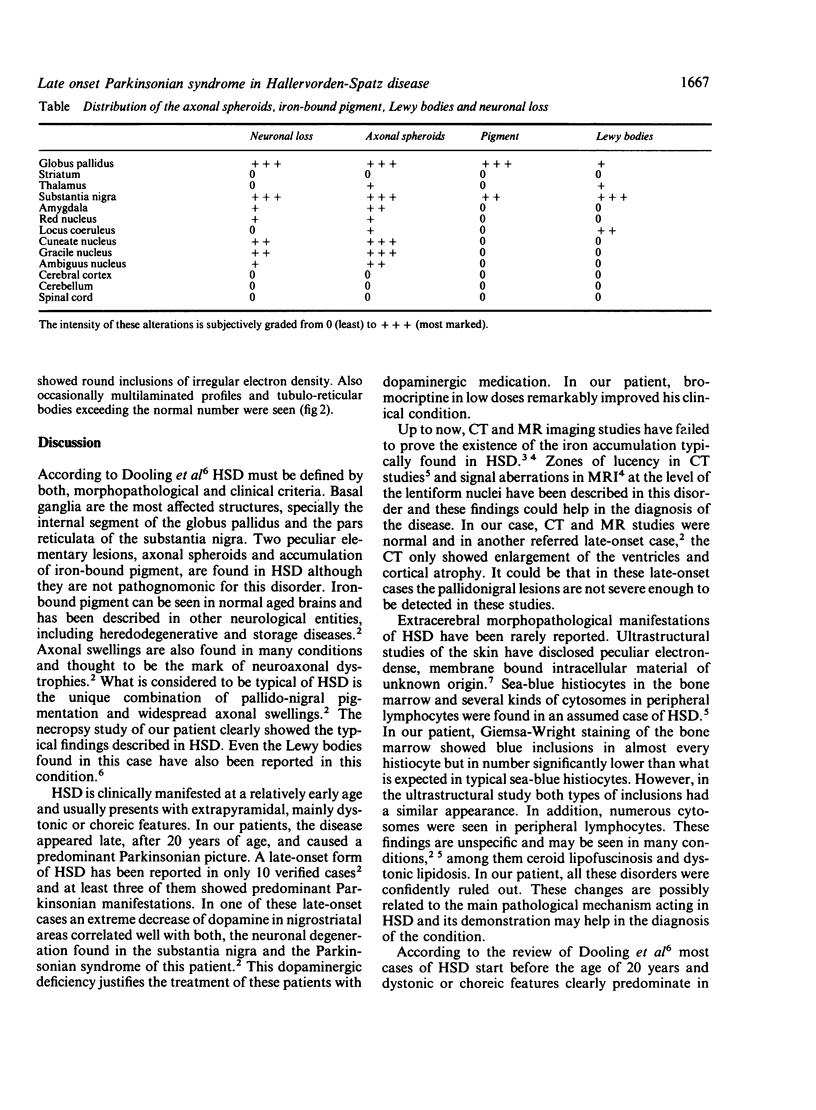
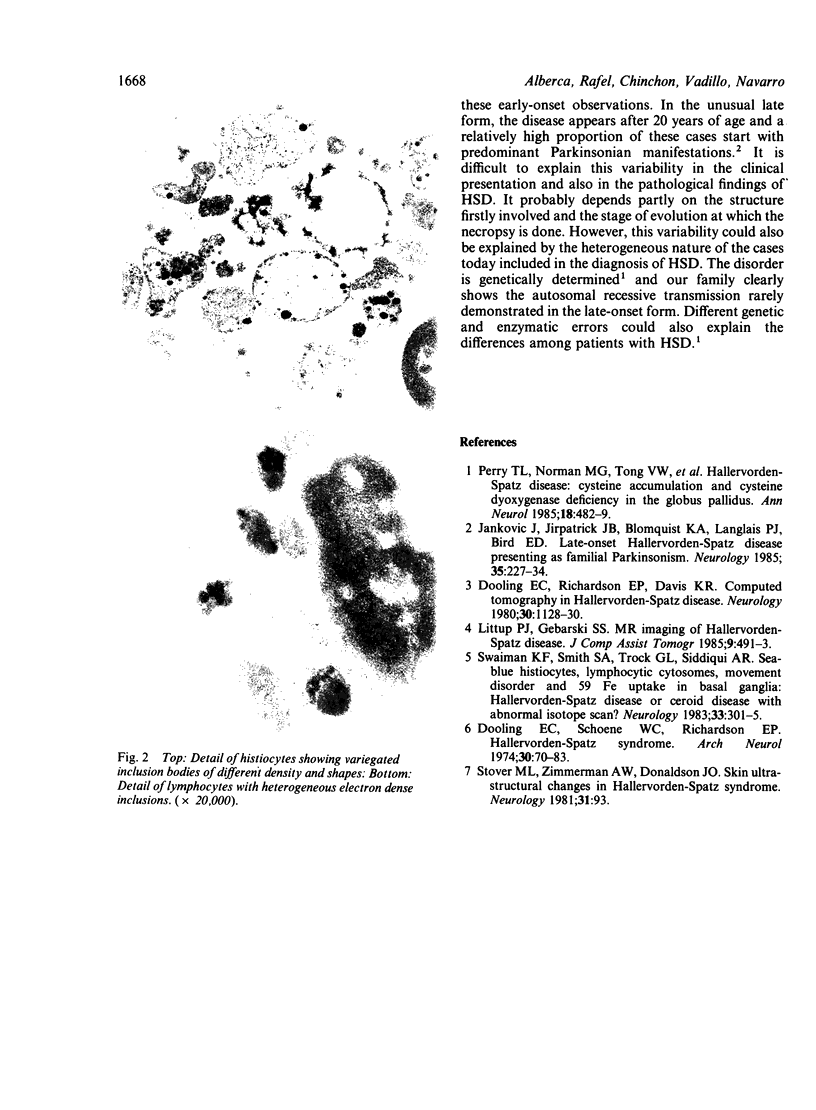
Images in this article
Selected References
These references are in PubMed. This may not be the complete list of references from this article.
- Berger J. R., Kelley R. E. Thyroid function in Parkinson disease. Neurology. 1981 Jan;31(1):93–95. doi: 10.1212/wnl.31.1.93. [DOI] [PubMed] [Google Scholar]
- Dooling E. C., Richardson E. P., Jr, Davis K. R. Computed tomography in Hallervorden-Spatz disease. Neurology. 1980 Oct;30(10):1128–1130. doi: 10.1212/wnl.30.10.1128. [DOI] [PubMed] [Google Scholar]
- Dooling E. C., Schoene W. C., Richardson E. P., Jr Hallervorden-Spatz syndrome. Arch Neurol. 1974 Jan;30(1):70–83. doi: 10.1001/archneur.1974.00490310072012. [DOI] [PubMed] [Google Scholar]
- Jankovic J., Kirkpatrick J. B., Blomquist K. A., Langlais P. J., Bird E. D. Late-onset Hallervorden-Spatz disease presenting as familial parkinsonism. Neurology. 1985 Feb;35(2):227–234. doi: 10.1212/wnl.35.2.227. [DOI] [PubMed] [Google Scholar]
- Littrup P. J., Gebarski S. S. MR imaging of Hallervorden-Spatz disease. J Comput Assist Tomogr. 1985 May-Jun;9(3):491–493. doi: 10.1097/00004728-198505000-00014. [DOI] [PubMed] [Google Scholar]
- Perry T. L., Norman M. G., Yong V. W., Whiting S., Crichton J. U., Hansen S., Kish S. J. Hallervorden-Spatz disease: cysteine accumulation and cysteine dioxygenase deficiency in the globus pallidus. Ann Neurol. 1985 Oct;18(4):482–489. doi: 10.1002/ana.410180411. [DOI] [PubMed] [Google Scholar]
- Swaiman K. F., Smith S. A., Trock G. L., Siddiqui A. R. Sea-blue histiocytes, lymphocytic cytosomes, movement disorder and 59Fe-uptake in basal ganglia: Hallervorden-Spatz disease or ceroid storage disease with abnormal isotope scan? Neurology. 1983 Mar;33(3):301–305. doi: 10.1212/wnl.33.3.301. [DOI] [PubMed] [Google Scholar]




